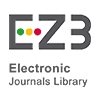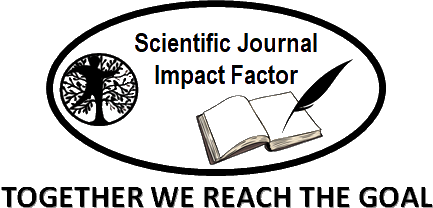A Study of Psychological Realism in the Innocents (1961)
Abstract
This article studies The Innocents (1961) from the perspective of psychological realism and analyzes this cinematic adaptation of “The Turn of the Screw” via semiotics, images and symbols deployed in the light of psychological realism. Henry James’s short story The Turn of the Screw has variously been adapted into several films. However, Clayton’s film seeks to question rather than reproduce these stereotypes. This is achieved by shifting attention away from the narrative and focusing instead on the characters and their reactions. The ghosts might be apparitions of dead people, or they may be nothing more than projections of Miss Giddens’s imagination. What really matters is the effect they have on Miss Giddens herself as she is forced to confront her hitherto suppressed desires.
Keywords
Full Text:
PDFReferences
Anushiravani, A. (1391/2012). "Seyr-e tahavvolāt-e adabiyāt-e tatbiqi [A Survey of the
Theories of Comparative Literature]". Adabiyāt-e Tatbiqi, 3(2), 3-7.
Cirlot, Juan Eduardo (2001). Dictionary of Symbols. Trans. Jack Sage. New York: Routledge Kegan Ltd.
Feenstra, Pietsie (2011). New Mythological Figures in Spanish Cinema: Dissident Bodies Under Franco. Amsterdam: Amsterdam UP. 45-6.
Griggs, Yvonne (2016). The Bloomsbury Introduction to Adaptation Studies: Adapting the Canon in Film, TV, Novels and Popular Culture., New York: Bloomsbury Academic.
Hutcheon, Linda (2014). Theory of Adaptation. Taylor and Francis. 31–2
James, Henry (1996). “The Turn of the Screw” in Complete Stories 1892-1898 (rpt. New York: The Library of America, 1996)
Kael, Pauline (1965). I Lost It at the Movies. New York: Bantam Books.
Kirk, M., & Diffenbaugh, V. (2011). A Victorian Flower Dictionary, The Language of Flowers Companion. New York: Ballantine Books.
Kress, G., & Leeuwen, T. (2006). Reading Images: The Grammar of Visual Design (pp. 124–125). London: Routledge.
Luscombe, T. (2019). Dealing with Ambiguity in Adapting Henry James’s ``The Turn of the Screw’’ to the Stage. Henry James Review, 40(1), 82–89.
Mazzella, A. J. (2002). Held Us’: ‘The Turn of the Screw’ from Henry James to Jack Clayton (pp. 11–33; E. S. Griffin, Ed.). Lexington.
Mitchell, L. (2002). Based on the Novel by Henry James’. Henry James Goes to the Movies (pp. 281–304). Griffin. Kentucky: University of Kentucky Press.
Raw, L. (2006). Adapting Henry James to Screen: Gender, Fiction, and Film. Lanham, Md: Scarecrow Press.
Tredy, D. (2019). Reading Henry James in the Twenty-First Century: Heritage and Transmission (pp. 126–128; N. U. Tyne, Ed.). UK Cambridge Scholars Publishing.
DOI: http://dx.doi.org/10.18415/ijmmu.v12i7.6878
Refbacks
- There are currently no refbacks.
Copyright (c) 2025 International Journal of Multicultural and Multireligious Understanding

This work is licensed under a Creative Commons Attribution-NonCommercial-NoDerivatives 4.0 International License.
https://ijmmu.com
editor@ijmmu.com
facebook.com/ijmmu
Copyright © 2014-2018 IJMMU. All rights reserved.



































